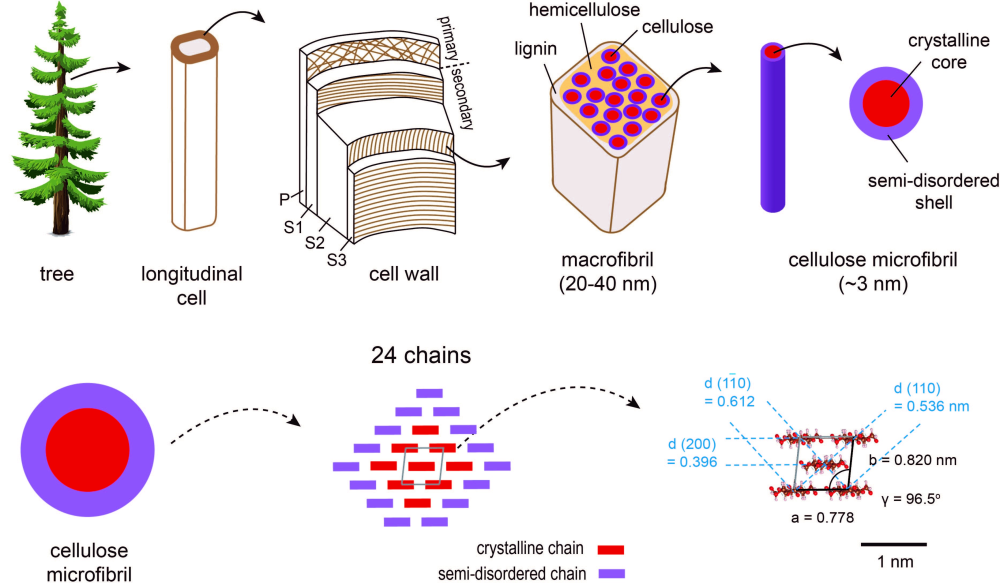NTU Solved Century-Old Challenge of Wood Cellulose, Results Published in Nature Plants
2023/7/12
Wood is an essential material and energy source in human development history. It is also a renewable resource that can be sustainably utilized in the future. Cellulose, which makes up about half of the weight of wood cell walls, is the most abundant organic substance on Earth, accounting for one-fourth of the global biomass. Despite a century of research on the structure of wood cellulose, the nanoscale structure remains unclear, particularly the number of glucan chains present in each cellulose microfibril, which is a contentious issue.
Under the leadership of Professor Hwan-Ching Tai (戴桓青), a former faculty member in the NTU Department of Chemistry, the research team utilized the BioSAXS beamline at the TPS third-generation synchrotron radiation facility, significantly improving the measurement signal for wood. Professor Cheng-Si Tsao (曹正熙), Associate Professor in the NTU Department of Materials Science and Engineering, developed a novel model that distinguishes microfibrils into a crystalline core region and a semi-crystalline shell layer. It was discovered that the high-Q shape factor originates from the scattering of the core region, contrary to the previous misunderstanding of scattering from the entire microfibril bundle. Professor Tsao incorporated the length effect into the SAXS analysis model, resolving long-standing errors caused by previous analytical models. Through fitting, the chain number of the core region can be calculated.
Additionally, Professor Jerry Chun Chung Chan (陳振中), from the NTU Department of Chemistry, and his research team have developed the GIFTED (Global Iterative Fitting of T1ρ-Edited Decay) solid-state nuclear magnetic resonance technique. This technique allows for the measurement of the molecular ratio between the core region and the shell layer in intact wood based on differences in molecular mobility. By combining these two innovative techniques, an estimation of the glucan chain number in wood microfibrils was made, unexpectedly concluding that there are 24 chains, overturning the commonly cited 36-chain model in textbooks for decades. This achievement addresses the century-old challenge of understanding cellulose structure in wood cell walls and holds significant implications for wood genetic improvement and the sustainable utilization of cellulose resources in the future.
This study, titled “Wood cellulose microfibrils have a 24-chain core-shell nanostructure in seed plants,” has been published in the prestigious international journal Nature Plants, a subsidiary of Nature. Chih-Hui Chang (張智輝), a graduate student from the NTU Department of Chemistry, is the first author. Professor Tsao and Professor Chan serve as corresponding authors. Associate Professor Ying-Chung Jimmy Lin (林盈仲) from the NTU Institute of Plant Biology is a co-author.
Read the journal article: https://www.nature.com/articles/s41477-023-01430-z.

Illustration of wood structure.